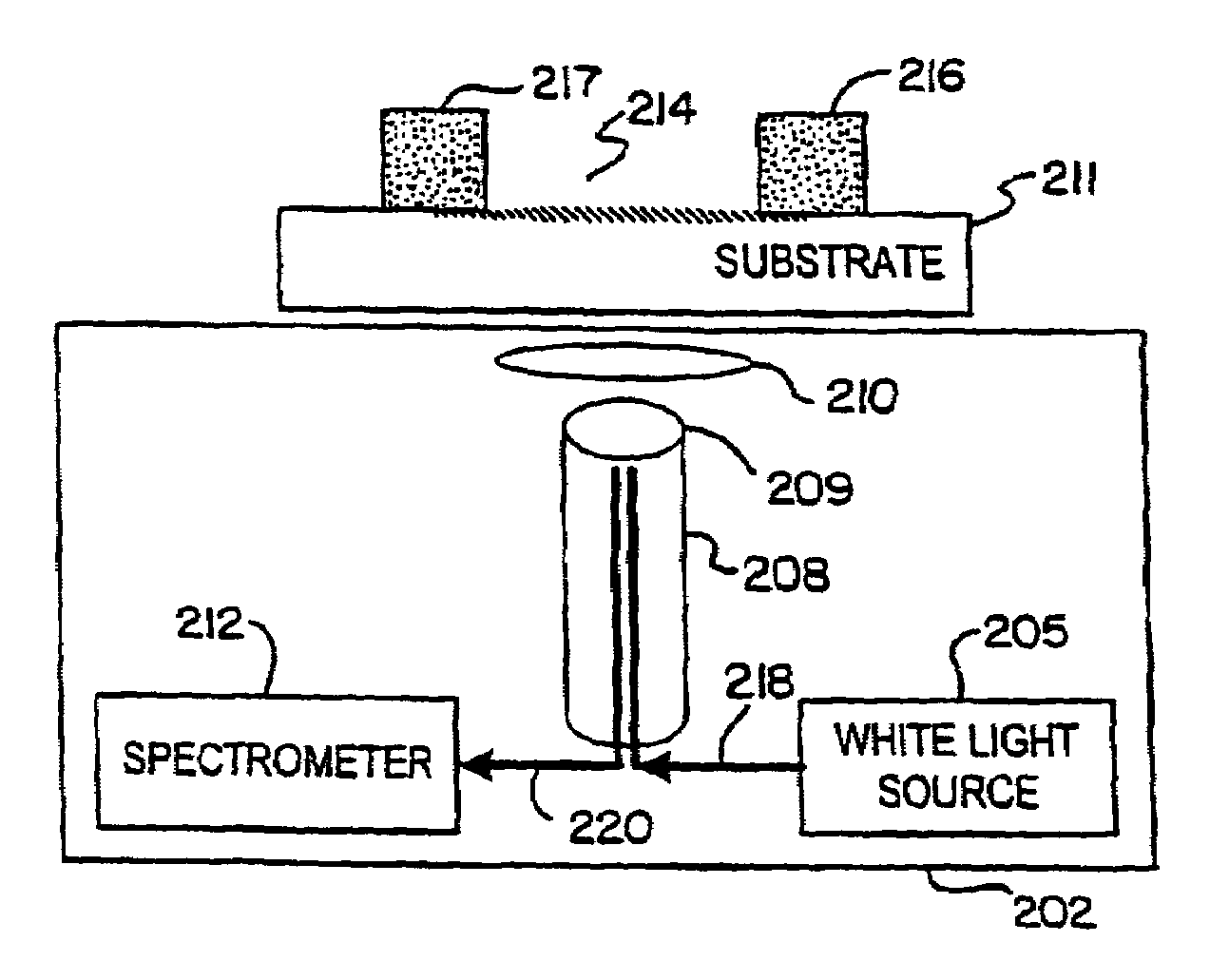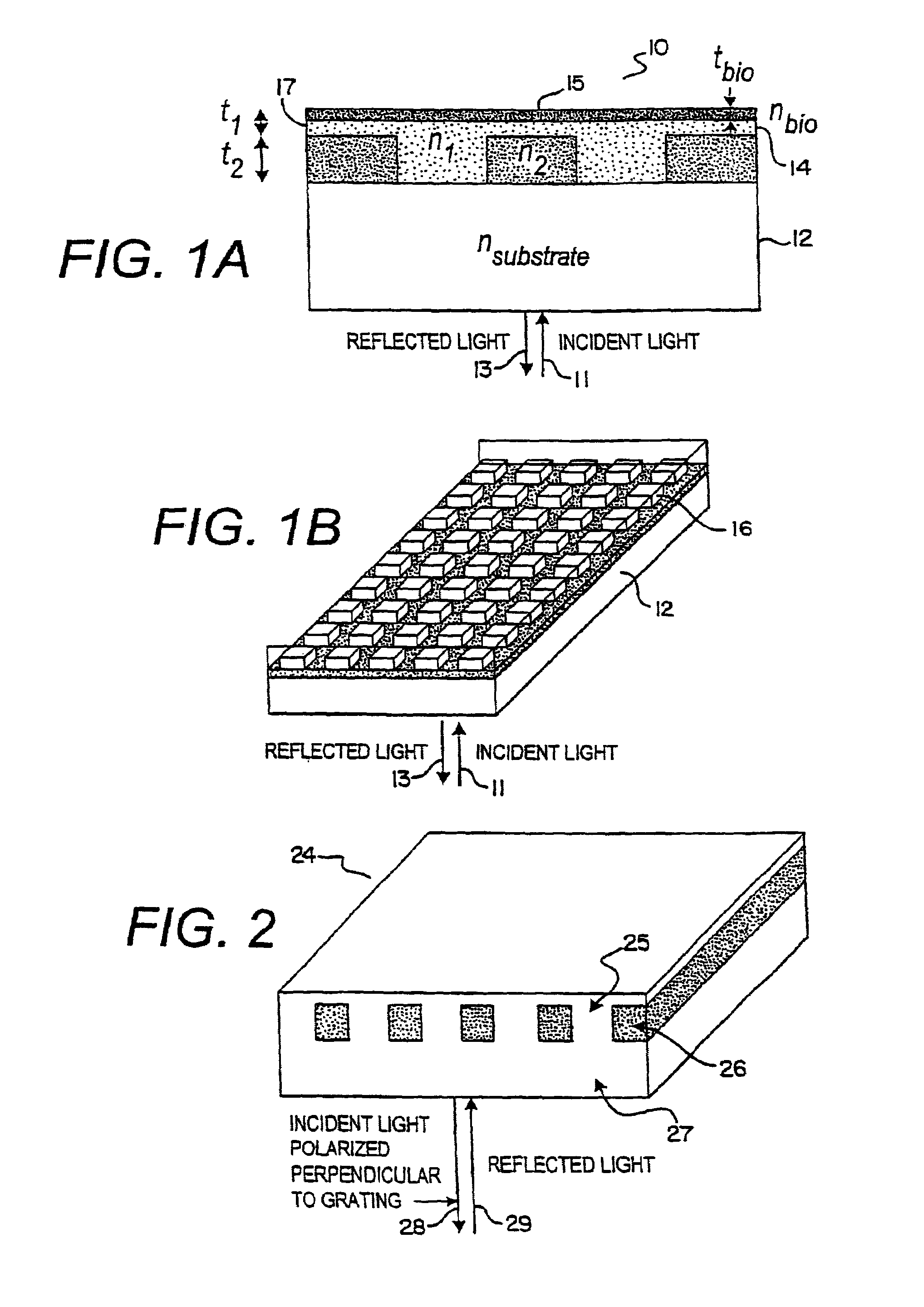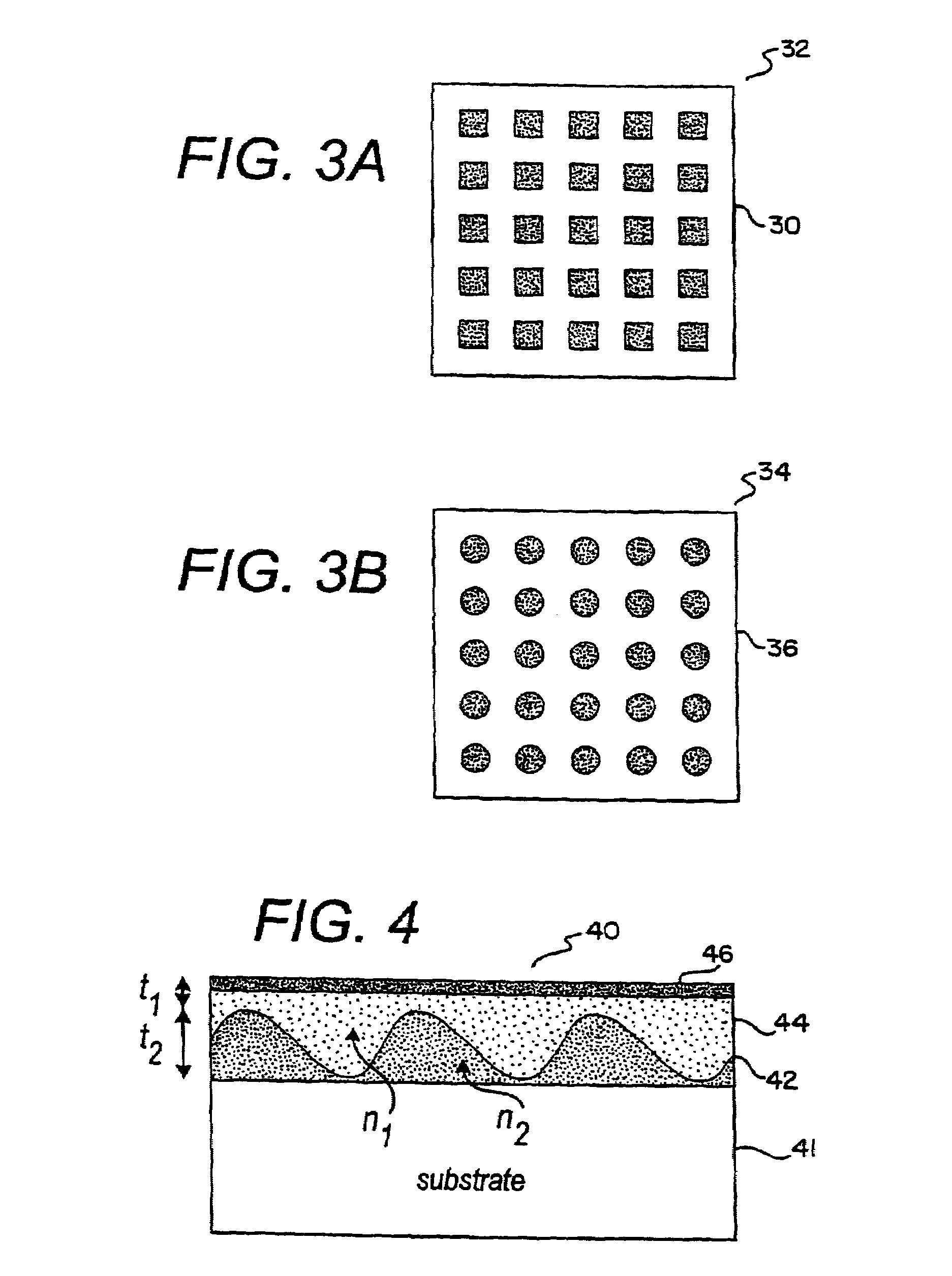Method and apparatus for detecting biomolecular interactions
a biomolecular interaction and method technology, applied in the field of methods and apparatus for detecting biomolecular interactions, can solve the problem that methods have yet to yield commercially available high-throughput instruments, and achieve the effect of being inexpensively integrated
- Summary
- Abstract
- Description
- Claims
- Application Information
AI Technical Summary
Benefits of technology
Problems solved by technology
Method used
Image
Examples
Embodiment Construction
[0049]1. Overview of Method and System
[0050]The present invention generally relates to a method and system for detecting biomolecular interactions. Preferably, these biomolecular interactions occur on a subwavelength structured surface biosensor, as described below.
[0051]One aspect of the present invention relates to a method and apparatus for detecting biochemical interactions occurring on a surface of a biosensor. In one embodiment, the biosensor is a calorimetric resonant optical biosensor embedded into a surface of a microarray slide, microtiter plate or other device.
[0052]The colorimetric resonant optical biosensor allows biochemical interactions to be measured on the sensor's surface without the use of fluorescent tags or calorimetric labels. The sensor surface contains an optical structure that, when illuminated with collimated white light, is designed to reflect only a narrow band of wavelengths. The narrow wavelength is described as a wavelength “peak.”The “peak wavelength ...
PUM
| Property | Measurement | Unit |
|---|---|---|
| thickness | aaaaa | aaaaa |
| depth | aaaaa | aaaaa |
| grating depth | aaaaa | aaaaa |
Abstract
Description
Claims
Application Information
 Login to View More
Login to View More - R&D
- Intellectual Property
- Life Sciences
- Materials
- Tech Scout
- Unparalleled Data Quality
- Higher Quality Content
- 60% Fewer Hallucinations
Browse by: Latest US Patents, China's latest patents, Technical Efficacy Thesaurus, Application Domain, Technology Topic, Popular Technical Reports.
© 2025 PatSnap. All rights reserved.Legal|Privacy policy|Modern Slavery Act Transparency Statement|Sitemap|About US| Contact US: help@patsnap.com



